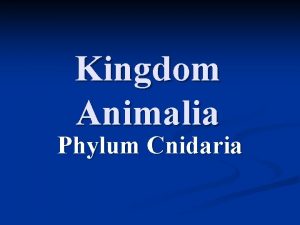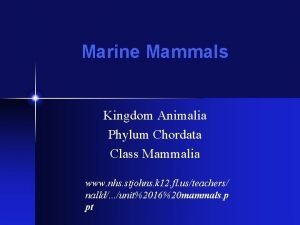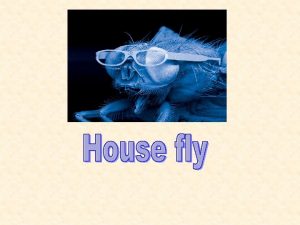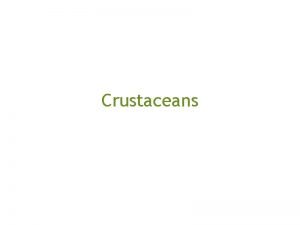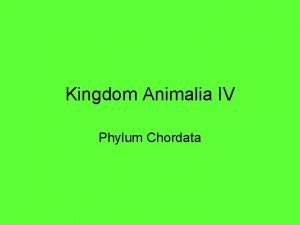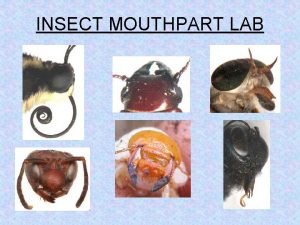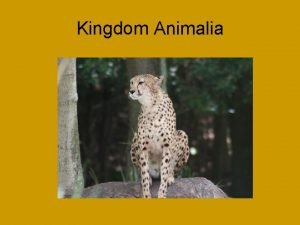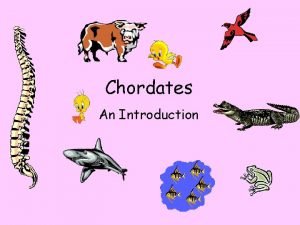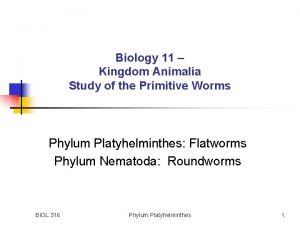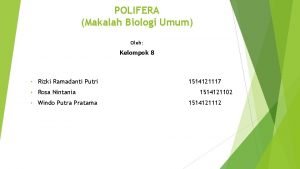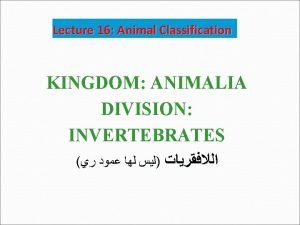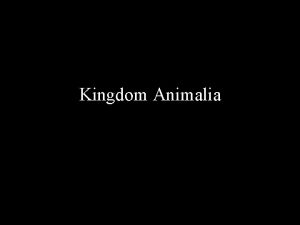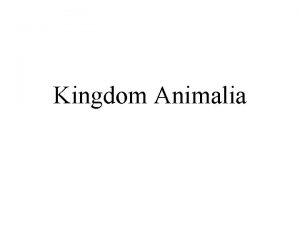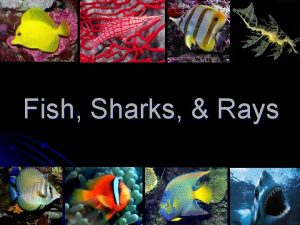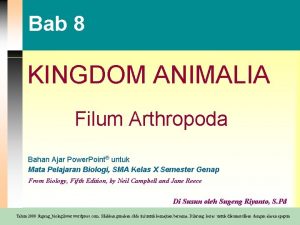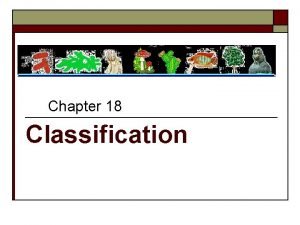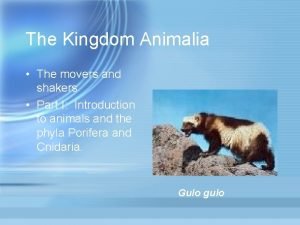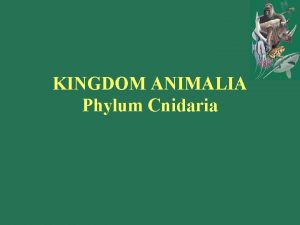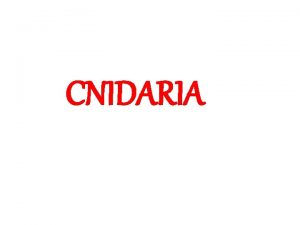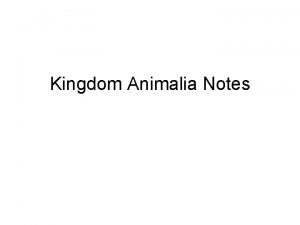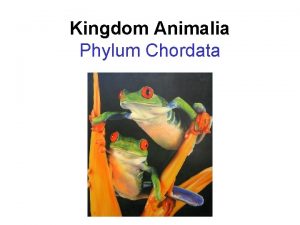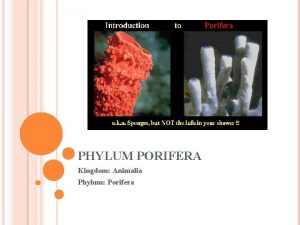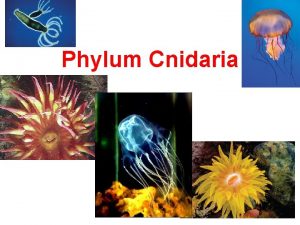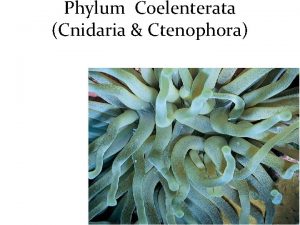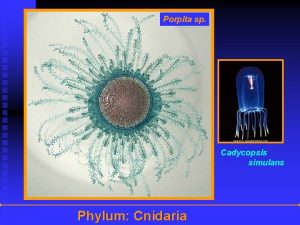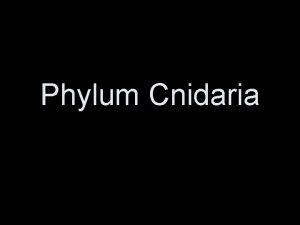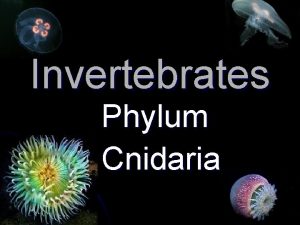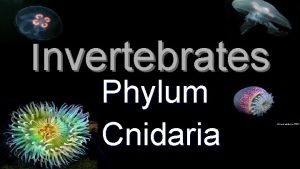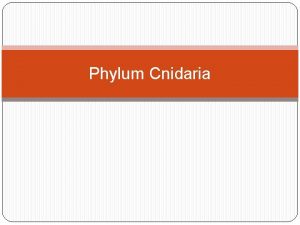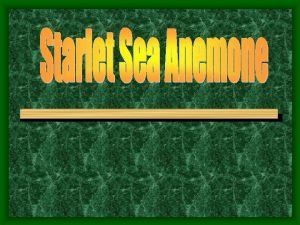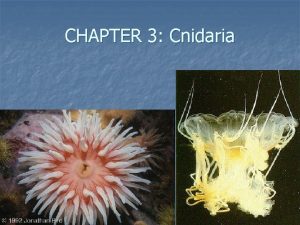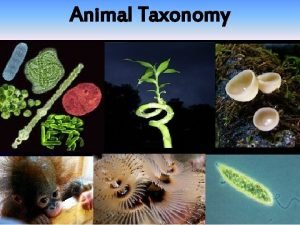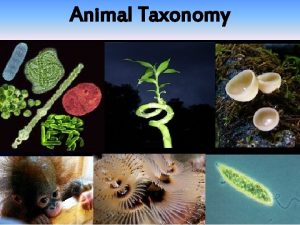PHYLUM CNIDARIA CNIDARIA Kingdom Animalia Phylum Cnidaria or























- Slides: 23

PHYLUM CNIDARIA


CNIDARIA • Kingdom: Animalia • Phylum: Cnidaria or Coelenterata Cnidarians are the oldest existing animals that have specialized tissues.

Body Plan • Levels of Organization: Specialized Cells and Tissues • Body Symmetry: Radial • Germ Layers: Two • Body Cavity: Acoelom • Embryological Development: None • Segmentation: Absent • Cephalization: Absent You Tube / Video Link

Characteristics Polyps • In the polyp form of a coral, the tentacles and mouth face upward.

Characteristics Medusa • In the medusa form of a jellyfish, the tentacles and mouth face downward.


Characteristics • Cnidarians are made up of two tissue layers separated by mesoglea. – Outer Layer (ectoderm) • Protection – Inner Layer (endoderm) • Digestion • The outer tissue layer has three cell types. – contracting cells (movement and propulsion) – nerve cells – cnidocytes (which contain nematocysts)

Characteristics • Nematocysts (Stinging Cells) Vinegar neutralizes Jellyfish stings! So – Tiny, harpoon-like use that FIRST should you get – On tentacles stung…have urine be a second option. – Poison & immobilize prey. • Fires in milliseconds – One of the fastest processes in nature discharged nematocyst barbs coiled nematocyst

Feeding • Gastrovascular Cavity – Inner body layer where digestion takes place via enzyme release.

Respiration, Circulation, Excretion • No respiratory organs. – cnidarians use the two cell layers to absorb oxygen/expel carbon dioxide via diffusion • No circulatory system. MOON JELLIES

Response • Nerve Net – Conducts nerve impulses from all parts of the body – No Brain (Control Center) – Contractions of muscle-like cells in the tentacles and bodies

Reproduction • Cnidarians can reproduce sexually or asexually. – Sexual: gametes released • Planktonic larva settles – Asexual: Polyp then grows & forms buds that become tiny medusa that pop off CORAL SPAWNING HYDRA BUDDING

Habitat • Found in both marine and freshwater ecosystems. You. Tube / Video Link

Role in Ecosystem Coral Reefs • Formed over thousands of years from successive layers of coral skeleton deposits (calcium carbonate forms underwater mountains of coral animal skeletons)

Role in Ecosystem • The underwater equivalent of the amazon jungle- very high species diversity and biomass

Role in Ecosystem • Reefs contain sponges, several cnidarians or ctenophores, fish, many types of worms we’ve not discussed, not to mention bryozoans, protists, bacteria, etc. . BRYOZOANS

Classes • The four major cnidarian classes are defined by their dominant body form. – Hydrozoa – Scyphyzoa – Cubozoa – Anthozoa

Hydrozoa • Both freshwater and marine

Portuguese Man O War

Scyphyzoa • Marine only, long tentacles

Cubozoa BOX JELLYFISH • Cube shaped bodies, strong nematocysts

Anthozoa • Medusa stage absent
 Coelenterata digestive system
Coelenterata digestive system Cnidaria characteristics
Cnidaria characteristics Seal phylum
Seal phylum Family leporidae kingdom
Family leporidae kingdom Kingdom: animalia phylum: arthropoda class: insecta
Kingdom: animalia phylum: arthropoda class: insecta Kingdom animalia phylum arthropoda
Kingdom animalia phylum arthropoda What are chordata
What are chordata Capital of egypt during the old kingdom
Capital of egypt during the old kingdom Old kingdom middle kingdom new kingdom
Old kingdom middle kingdom new kingdom Nnn ruled
Nnn ruled Youtube
Youtube Animalia kingdom
Animalia kingdom Kingdom animalia characteristics
Kingdom animalia characteristics Animalia kingdom chordates and vertebrates
Animalia kingdom chordates and vertebrates Characteristics of platyhelminthes
Characteristics of platyhelminthes Manfaat calcarea
Manfaat calcarea Karakteristik animalia
Karakteristik animalia Automorphic trait
Automorphic trait Animal kingdom cladogram
Animal kingdom cladogram Characteristics of animalia kingdom
Characteristics of animalia kingdom Sharks kingdom
Sharks kingdom Arthropoda
Arthropoda What are the rules for writing scientific names
What are the rules for writing scientific names Nine phyla of kingdom animalia
Nine phyla of kingdom animalia

